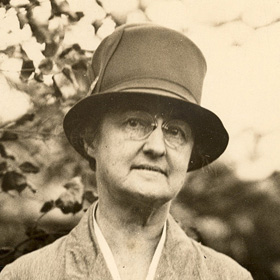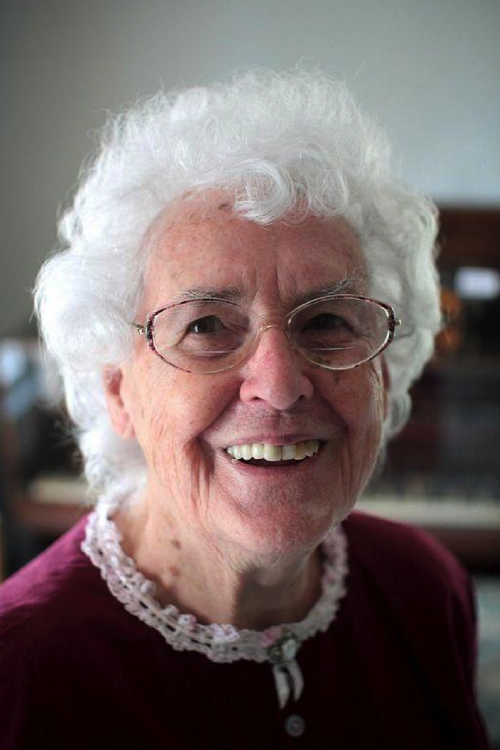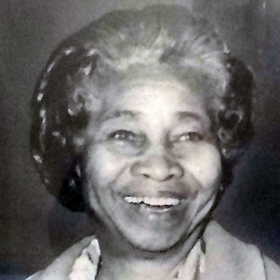Faith in suffering was the life theme of author Elizabeth Payson Prentiss (1818-1878). Elizabeth lived in New Bedford for over five years as a compassionate pastor’s wife who gave comfort to those in need. She wrote 25 books, mostly juvenile and religious fiction, as well as a popular Christian hymn. Elizabeth persisted in giving a positive interpretation of suffering as part of God’s unerring plan.
Faith in suffering was the life theme of author Elizabeth Payson Prentiss (1818-1878). Elizabeth lived in New Bedford for over five years as a compassionate pastor’s wife who gave comfort to those in need. She wrote 25 books, mostly juvenile and religious fiction, as well as a popular Christian hymn. Elizabeth persisted in giving a positive interpretation of suffering as part of God’s unerring plan. In her own life, she accepted suffering and found happiness independent of earthly circumstances.
Elizabeth was born in Portland, Maine on October 26, 1818, to distinguished Congregational minister Edward Payson and Ann Shipman Payson. Elizabeth’s Christianity was influenced by her parents and by the dominant religious spirit in New England in the first half of the 19th century. These influential elements included the inherited Puritan foundation, an Evangelical devotional tone, a high regard for mission work, and a new spirit of reform that emphasized personal virtue and social justice. Elizabeth was also impacted by the literary influences of the time, including the poetry of Wordsworth, Tennyson and Longfellow.
She experienced her first great loss at the age of nine, when her father died of tuberculosis in 1827. The family moved to New York City in 1831, where Elizabeth joined the Bleeker Street Presbyterian Church and publicly declared her faith in Christ. In 1832, the Paysons returned to Portland, where Elizabeth’s oldest sister Louisa opened a very successful school that was managed by their mother. By 1834, at age 16, Elizabeth’s stories and poems were regularly published in Youth’s Companion, a New England religious periodical. After she finished her education, Elizabeth began teaching in 1838 in her Portland home and then in Richmond, Virginia, where she taught at a girls’ boarding school beginning in 1840.
On April 16, 1845, Elizabeth married George Lewis Prentiss, a Congregational minister and brother of her close friend Anna Prentiss Stearns. The couple settled in New Bedford, where George became the pastor of South Trinitarian Church and Elizabeth assumed the role of pastor’s wife, bringing special comfort to the sick and the bereaved. The newlyweds were welcomed into New Bedford society, affluent from its successful whaling industry. New Bedford’s wealthy and refined power couple Sarah and James Arnold welcomed the couple, showing them special kindness, including flowers and fruit from their beautiful garden and greenhouses. During her five and a half years in New Bedford, Elizabeth formed close friendships, gave birth to two of her six children, grieved the death of her mother and experienced other joys and sorrows. As Edward, her second child, was distressed and slept very little, Elizabeth experienced chronic health problems herself, including weekly headaches that lasted for days, dizziness, depression and insomnia.
The Prentiss family left New Bedford in 1851, when George became the pastor of Mercer Street Presbyterian Church in New York City. In 1852, within a period of three months, Elizabeth lost her son Edward in January, at four years of age, and her third child, newborn daughter Bessie, in April. She returned to her writing with the following poem, found on a scrap of paper among her manuscripts:
My Nursery, 1852
I thought that prattling boys and girls
Would fill this empty room;
That my rich heart would gather flowers
From childhood’s opening bloom.
One child and two green graves are mine,
This is God’s gift to me;
A bleeding, fainting, broken heart –
This is my gift to Thee.
In 1853, after 13 years with no writing published, with love and sorrow deepening her life experiences, Elizabeth wrote the well-received children’s story Little Susy’s Six Birthdays and resumed her career as a published author. Children and parents alike loved little Susy, a real life baby who was both lovable and mischievous. Three years later, Elizabeth added a sequel, Little Susy’s Six Teachers, welcomed with equal enthusiasm. Her 1856 novel The Flower of the Family: A Book for Girls elevated family devotion in young women and was her first great success, with translations into French and German. That same year, after the near death of her daughter Minnie, Elizabeth wrote the well-known hymn “More Love to Thee, O Christ.” With increasing regularity, she continued to write children’s stories, novels, and verse.
Stepping Heavenward, Elizabeth’s most popular book, published in 1869, sold over 300,000 copies worldwide and became s staple in Sunday school libraries. An autobiographical novel, Stepping Heavenward was written as the diary of its heroine Kate, who lost her father and a child, just as Elizabeth did. Kate showed the reader how to build a close, personal relationship with God to receive comfort through sickness and death. For Kate, acceptance of suffering with faith became a way to glorify God, who sent solace in times of anguish. Elizabeth confirmed, “Every word of that book was a prayer, and seemed to come of itself.” Her purpose in writing was to share God’s comfort and guidance with others, as she stated in one of her last letters, “Much of my experience of life has cost me a great price and I wish to use it for strengthening and comforting other souls.” Elizabeth’s positive interpretation of suffering as reflected in Stepping Heavenward persisted throughout her life.
In 1868, Elizabeth and George built a summer home in Dorset, Vermont, where Elizabeth died in 1878 at the age of 59. Her popular hymn “More Love to Thee, O Christ” was sung at her funeral.
Ann O’Leary
Information from
- Harland, Marion. “Elizabeth Prentiss.” Our Famous Women: An Authorized Record of the Lives and Deeds of Distinguished American Women of Our Times, A. D. Worthington, 1884, pp. 539-569. https://readseries.com/auth-oz/prentiss-19th.html.
- Prentiss, Elizabeth. The Life and Letters of Elizabeth Prentiss. Anson D. F. Randolph, 1882. https://books.google.com/books/about/The_Life_and_Letters_of_Elizabeth_Prenti.html?id=_3ICAAAAYAAJ&printsec=frontcover&source=kp_read_button#v=onepage&q&f=false.
- Yamaguchi, Miho. “Elizabeth Prentiss’ Faith in Suffering and Perplexity about the Wesleyan and the Higher Life Doctrines: On ‘Stepping Heavenward’” Literature and Theology, vol. 18, no. 4, 2004, pp, 415-426. JSTOR, https://www.jstor.org/stable/23927263.
![[Elizabeth Payson Prentiss], c. 1882, Drawing, from The Life and Letters of Elizabeth Prentiss Elizabeth Payson Prentiss](https://historicwomensouthcoast.org/wp-content/uploads/2020/03/Elizabeth-Prentiss-280w.png)




